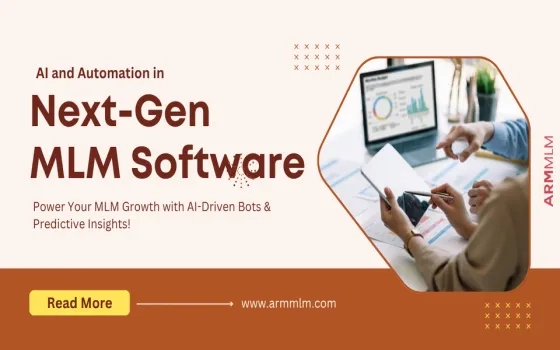The delivery of software is becoming increasingly intricate Simultaneously, it is becoming extremely relevant as a requisite competitive advantage for companies across industries, regardless of their product or service. Institutions must go beyond simply now being a software company to become a high-performing one. Having to take on this task can also be difficult.
This is where value stream management comes into play. Everything in the software delivery lifecycle (SDLC) from concept to production required to produce software solutions or facilities to clients is referred to as a value stream. By concentrating on value streams, the valuation that the client will get becomes the foundation of software product development. And besides, it is customer-satisfying software and services solutions that drive organizational success nowadays.
This management style has many goals which can be met with the support that it needs. It can help you attach various systems, teams, and techniques to break down command and control silos. Also, it can utilize real-time metrics to deliver better results.
Apart from that it can allow for cross-team cooperation and make sure that it incorporates leadership into SDLC procedures. With it, you can make sure that you coordinate and automate the entire process. Moreover, value stream management allows teams to achieve greater performance software for their prospective clients while minimizing costs and risks.
What is a Software Value Stream?
A software value stream encompasses all activities necessary to produce software solutions or facilities to clients from concept to production. The client inevitably determines the worth of software products. Software products or services that provide ongoing benefits to clients will push the value proposition for any organization.
To maximize the potential benefits and consumer satisfaction, every stage in the value stream must be generating value in the customer-centric sense of the word. It, therefore, implies that as an idea progresses via development, the design stage, and testing, the benefits of the products must increase until it you deliver them to the customer.
Nevertheless, software design and development are challenging in big enterprises. Therefore, mapping the value stream from beginning to finish could be challenging. And even to understand what your value streams are you would need to go through a lot of work.
Value stream management, which is based on the industry standards and best that reinvented production efficiency in the last several halves of the twentieth century applies continuous improvement to software development.
When a company chooses software delivery in aspects of value streams, it can be beneficial for them. They can recognize that what stages contribute positively or which start creating garbage. As a result, it allows them to start optimizing the work process via the value stream.
The above contains in which there are disruptions, where there’s a higher number of flaws and redesign, and perspectives on how to eliminate that wastage. It’s why you start with a value stream map of the present incarnation.
How does Value Stream Thinking improve on current methods of operation?
After you’ve made your value stream, then you can focus on the next step. Now you can start working on your software design and evaluation business process from start to finish. Regardless of what your organization’s objectives are, accomplishing them necessitates optimizing the value stream.
Quality of the product, DevOps implementation, secure execution, and even ramping up launch speed each necessitate value stream enhancement to prosper. Quality management starts with assessing which area you are in and pinpointing chances to progress forward into your goals.
The next step in Software Development is Value Stream Management
The goal of it is to take great pleasure in value by providing software products that add significance to their lives. Value stream management accomplishes it via a comprehensive framework to software development that allows any institution to become a technological powerhouse.
Each component of the application implementation phase is captured in a clear picture of the value stream. This provides the problem-solving techniques that are necessary for the people in the development process. It helps DevOps managers, product managers, and many others in command structure to constantly enhance application and software development.
Systems for value stream management use an analysis framework that intersects toolchains into a familiar information program that offers end-to-end accessibility and tracking throughout the value stream. Businesses no longer have to transcribe information in a database. Previously they had to do it through one method to the other. It was because they had to comprehend what is happening in the framework overall.
Conversely, you can gain deep observations from evaluating a large and diverse set of data. You can do it by using the same definitions that are now available. As a result, it is enabling companies to make quick decisions and drive innovation more quickly.
Evaluating the flow of work through value streams
In order to handle value streams from start to finish, operations, and maintenance silos, it requires an important step. You would need to break it down first among techniques and workgroups. Teams can perceive the workflow around the company in real-time. They do it usually by integrating toolchains throughout the portfolio with value stream solution providers.
It thus enables the capacity to quantify also at whatever is currently in the value stream. Also, it can tell them how they ended up getting there too and changes over a period. It can cause engineering and software groups to go from needing little if any knowledge into their procedures to being inundated with real-time productivity measures
Via business analytics options. it can enable teams to concentrate on the greatest essential performance measures. Moreover, it also allows them to record them in real-time. Value stream management systems enable this navigable.
Metrics for DevOps
Groups begin by focusing on DevOps metrics which encapsulate the bandwidth and steadiness of their value streams. Such data sets serve as indexes of the wellbeing of your value stream and how it varies with time. The 4 major DevOps metrics characterized by the Accelerate State of DevOps Report are as follows.
- Deployment frequency – The frequency with which software in a team’s value stream will dispatch to production.
- Lead time – The amount of time it takes from when code to when it is creating effective production of the value stream.
- Average time to fix – The time it takes to reestablish provider when a provider event or a deficiency that affects consumers takes place inside the team’s value stream
- Change fail rate – The proportion of adjustments to production that outcome in deteriorated providers and necessitate remedial work within the team’s value stream.
Metrics of Flow
Once you’ve integrated DevOps metrics into your procedures, you can start integrating flow metrics. Such measurements extend the streaming product notion to offer a view of how this is occurring inside the value stream. A stream object is a sequence of tasks that is important to the company, such as characteristics, deficiency, or loans. The following are the standard flow metrics:
- Flow Velocity – It is the amount of Flow Products of every sort that complete over a specific way – also known as bandwidth – and suggests as to if the value proposition is speeding up.
- Flow Distribution – The proportion of the four Stream Goods that finish over a specific period, Flow Distribution measures it. This aids in prioritizing particular aspects of jobs all through particular period periods to achieve the optimal business results.
- Flow Time – Flow Time evaluates the period it requires for Flow Goods to progress from beginning to end. It would be including both effective and sit tight times and can detect whenever the moment to worth or cycle time is increasing.
- Flow Efficiency – It is the proportion of activity period to wait time as a percentage of total Flow Time. It can assist you in determining when disposal is rising or falling in your procedures.
- Flow Load – Flow Load is a metric that counts the number of Flow Items that are underway (active or waiting) within a given value stream. The above supervise the usage of value streams, which can result in decreased productive output.
Governance Automation and Constant Conformance
Value stream management systems with toolchains can enable employees to incorporate leadership into the current Software development life cycle. It thus implies that policymaking guidelines acclimate to the SDLC by becoming autonomous through the use of available technologies. Value stream management, for instance, would then make sure that inspection and stakeholder evaluations are complete before proceeding with the SDLC. As a result, everyone regarding software delivery will instantly abide by the management requirement set in the value stream management platform, elevating it to a capable of constant compliance.
Reinventing what is feasible in the planning phase and instrumentation
Often enough, launch leadership is stymied by word documents that update through a manual process. It is because to reflect the status of a launch. Taking the whole day chasing down pieces of information does not contribute to the creation of value. Conversely, launch managers can obtain the state of the task inside of and throughout value streams.
They can do this in real-time using value stream management systems. It frees up release managers’ time to focus on enhancing the value stream via the planning phase and checking, evaluating release threats. Moreover, it helps in increasing System development life cycle efficacy through computerization and effective coordination.
Simplifying the management of test environments
Once more, value stream management is both regarding being willing to provide more benefits to clients. This includes waste elimination all across the SDLC. Also, it includes test environment management. test environment managers continuously receive appointment queries for explicit environments.
Rather than wasting time handling these queries and resolving conflicts, the value stream function of management instantly consolidates requests and setup timetabling. Because rather than filtering through large numbers of requests, they can generate value. And test environment managers can easily do this. By focusing on creating value in the SDLC by constructing and arranging a testing environment they can achieve their goal.
Wrapping Up
Value stream management is simple for corporations to implement It starts with the formation of a value stream map, by the identification of corporate outputs and the implementation of a value stream management platform. Because the value stream function of management incorporates immediately with your available technologies, the application is simple. Nevertheless, if you have a good software company by your side, it can make things a lot easier for you.
Source: Why Value Stream Management for Software Delivery?
























